Here is a quick guide to some key crop growth stages (GS) which will be helpful for managing crops this season.
There are lots of important timings to consider with crops at present. There is such variability between crops due to sowing date and weather that it is very tricky to keep on top of things.
Some winter crops have passed some key milestones, but others have yet to reach them and more are still to be hit.
In order to correctly identify the growth stage, you will need to dissect plants by pulling back the leaves and also by slicing the stem in half.
GS30
Growth stage 30 (GS30) signals the end of tillering. It is a key timing for many crops, for nitrogen applications, growth regulator and fungicides.
Most winter crops are gone past this stage, but it is important to be able to identify it in spring crops. For example, to aid with tillering, a growth regulator is needed before GS30.
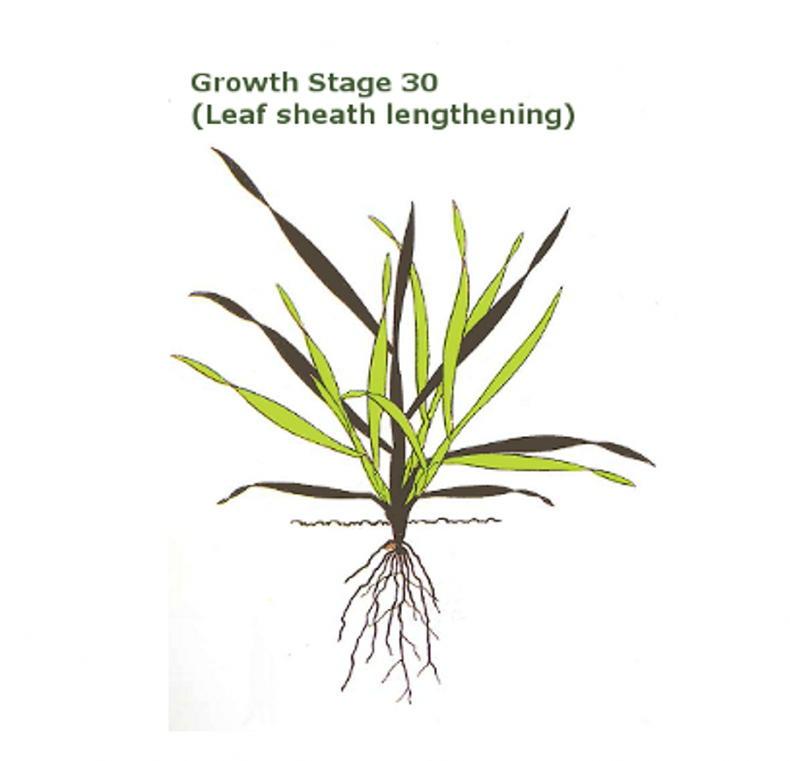
Figure 1. Growth stage 30. \ Teagasc
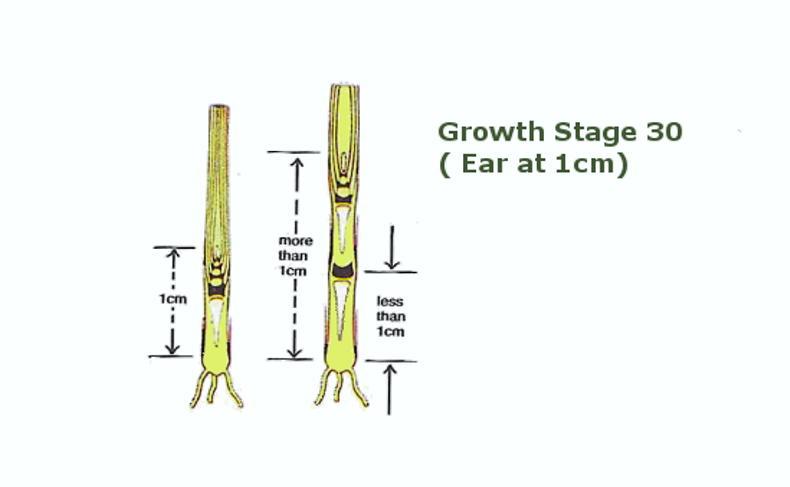
Figure 2. Identifying growth stage 30. \ Teagasc
See Figures 1 and 2 to identify GS30 - the first internode is less than 1cm.
GS31
Plant growth regulator on winter wheat should be applied by GS31. GS31 is when an internode is 1cm or more, but the internode above it is less than 2cm. See Figure 3.
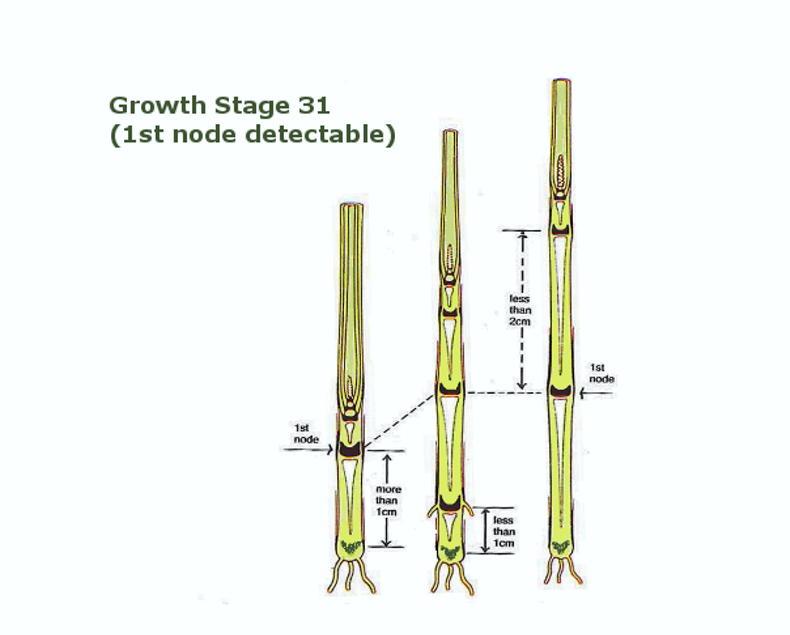
Figure 3. Growth stage 31. \ Teagasc
GS32
All nitrogen should be applied to cereal crops by GS32.

Figure 4. Growth stage 32. \ Teagasc
In Figure 4, you can see that GS32 is when the space between the first and the second node is more than 2cm and the space between the second node and the third node is less than 2cm.
GS32 is also a timing to apply plant growth regulator in barley. Products such as Moddus and Meddax max are best applied between GS32 and GS37.
GS37
GS37 is when the flag leaf is just visible. You may need to peel back some leaves to make sure you have the flag leaf, which is the last leaf that will emerge. See Figure 5.
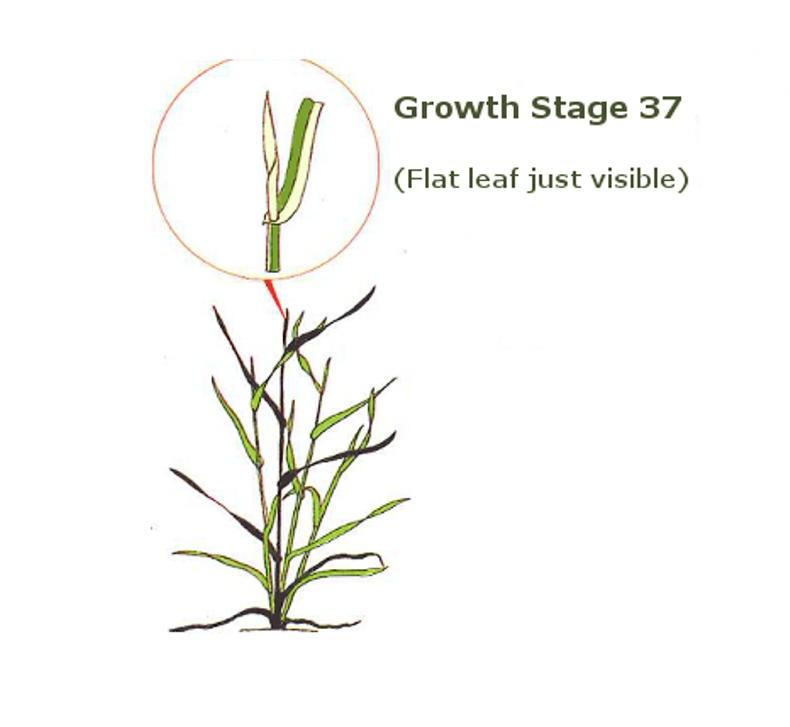
Figure 5. Growth stage 37, flag leaf just visible. \ Teagasc
GS39
GS39 is when the flag leaf ligule is just visible, so the leaf is out. The final fungicide on barley can be applied from GS39 to GS49. See Figure 6.

Figure 6. Growth stage 39, flag leaf emerged. \ Teagasc
GS49
GS49 is when the awns are just visible on a barley plant and is often seen as the ideal timing for the final fungicide, but this may vary with disease levels and the timing of the previous fungicide. See Figure 7.
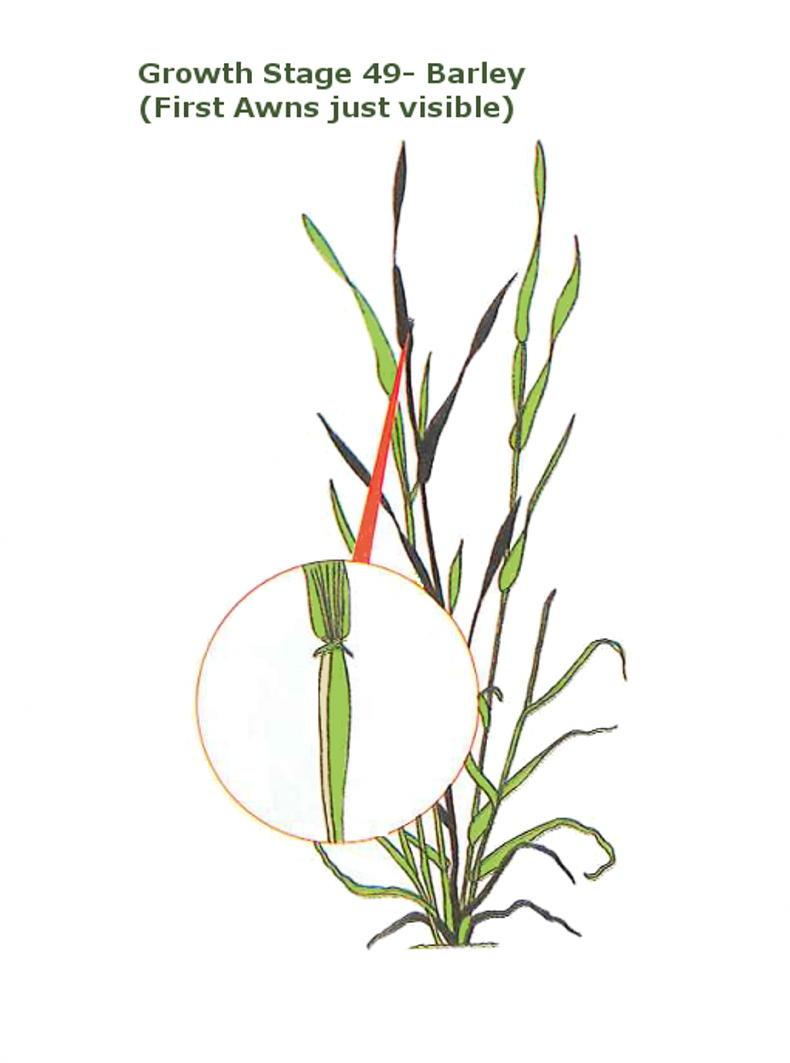
Figure 7. Growth stage 49, awns visible. \ Teagasc
Here is a quick guide to some key crop growth stages (GS) which will be helpful for managing crops this season.
There are lots of important timings to consider with crops at present. There is such variability between crops due to sowing date and weather that it is very tricky to keep on top of things.
Some winter crops have passed some key milestones, but others have yet to reach them and more are still to be hit.
In order to correctly identify the growth stage, you will need to dissect plants by pulling back the leaves and also by slicing the stem in half.
GS30
Growth stage 30 (GS30) signals the end of tillering. It is a key timing for many crops, for nitrogen applications, growth regulator and fungicides.
Most winter crops are gone past this stage, but it is important to be able to identify it in spring crops. For example, to aid with tillering, a growth regulator is needed before GS30.

Figure 1. Growth stage 30. \ Teagasc

Figure 2. Identifying growth stage 30. \ Teagasc
See Figures 1 and 2 to identify GS30 - the first internode is less than 1cm.
GS31
Plant growth regulator on winter wheat should be applied by GS31. GS31 is when an internode is 1cm or more, but the internode above it is less than 2cm. See Figure 3.

Figure 3. Growth stage 31. \ Teagasc
GS32
All nitrogen should be applied to cereal crops by GS32.

Figure 4. Growth stage 32. \ Teagasc
In Figure 4, you can see that GS32 is when the space between the first and the second node is more than 2cm and the space between the second node and the third node is less than 2cm.
GS32 is also a timing to apply plant growth regulator in barley. Products such as Moddus and Meddax max are best applied between GS32 and GS37.
GS37
GS37 is when the flag leaf is just visible. You may need to peel back some leaves to make sure you have the flag leaf, which is the last leaf that will emerge. See Figure 5.

Figure 5. Growth stage 37, flag leaf just visible. \ Teagasc
GS39
GS39 is when the flag leaf ligule is just visible, so the leaf is out. The final fungicide on barley can be applied from GS39 to GS49. See Figure 6.

Figure 6. Growth stage 39, flag leaf emerged. \ Teagasc
GS49
GS49 is when the awns are just visible on a barley plant and is often seen as the ideal timing for the final fungicide, but this may vary with disease levels and the timing of the previous fungicide. See Figure 7.

Figure 7. Growth stage 49, awns visible. \ Teagasc













 This is a subscriber-only article
This is a subscriber-only article










SHARING OPTIONS: